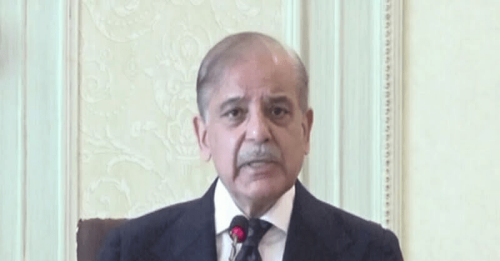• NHA expresses serious concerns over risks involved
• Says expressway not meant for public transport
KARACHI: The Sindh government’s plan to launch a Peoples Bus Service on Lyari Expressway hit a speed bump when the federal government and traffic authorities argued that the 16.5-kilometre-long infrastructure “isn’t meant” for public transport operations and any such initiative would increase risks for vehicles plying on the expressway and adversely affect the facility.
In a surprising move, the Sindh transport department last week announced the launch of its Peoples Bus Service on the Lyari Expressway to lessen travelling problems of commuters just days after the proposal was thoroughly discussed as to whether such an initiative was viable or not.
The Sindh government announcement raised serious questions about the success of the project aimed at addressing needs of hundreds of thousands people travelling between districts east and south each day.
The federal authorities had conveyed to the provincial government in several meetings held before the announcement of the project by the Sindh government that the initiative was not viable because of many reasons.
“The idea behind this announcement is absolutely based on public service,” said an official of the federal government department, which governs, regulates and manages the Lyari Expressway — the National Highway Authority (NHA) while admitting good intentions of the provincial government.
“We don’t doubt the intentions of the Sindh government, but the thing is Lyari Expressway is a two-lane expressway which is meant for fast-moving vehicular traffic without having any stops. One needs to understand that it’s not meant for the public transport operation.”
He then referred to risks involved in the operation of the public transport service which could lead to serious issues for overall purpose of the expressway and also damage the scope of its utility.
“Average traffic count on Lyari Expressway on daily basis ranges from 40,000 to 50,000 vehicles out of which 80 per cent are cars and the rest are other LTVs [light transport vehicles],” said the official.
“There is neither road verge, nor a service area like a fuel station or any other facility, either on the north side or south side of the expressway which could be utilised to park any broke down vehicle. There are around 27 curves and only 15 patches of just one to two-kilometre lengths are straight at Lyari Expressway which makes it vulnerable especially for PSVs [public service vehicles].”
With more than 20 ramps and 12 bridges on the expressway, the north side of the road is built ‘solely with pillars’ at certain locations, which makes it vulnerable for vehicles loaded with dozens of people at a time, he added.
“There are 12 roads crossing beneath the expressway from both north and south sides and it may be extremely dangerous if any PSV falls down or if it falls over any other vehicle or collide with some vehicle,” he added.
A traffic official, while agreeing with the federal institution’s concerns, cited some ‘facts’ which make the Lyari Expressway ‘useable’ for certain vehicles with certain speed and weight.
“There are no hard shoulders on the ramps or bridges,” he added.
“In case of a breakdown of a bus, it will remain there on the carriageway and will obstruct free flow of traffic resulting in jams and an extreme danger for other vehicles plying on the expressway. On both sides of the expressway, there is a densely populated area throughout the road. In case of an accident or some incident, there is a chance of a bus falling onto residential areas. Similarly, in case of an emergency, rescue or recovery of such a bus will be very difficult because the access is only available at interchanges.”
He mentioned a technical fact that the Lyari Expressway was designed in such a way that traffic could not turn from north side to south side as there were no turns between the two except the exits at the interchanges.
“Another point is when you run a public transport service on any route, there are chances of developing illegal or unauthorised bus stops. They cannot be ruled out when such operations are launched. There are no places for proper bus stops on the expressway and passengers will board and disembark on carriageway which is not only dangerous for their own safety, but also for other road commuters.”
Published in Dawn, June 7th, 2023















































Dear visitor, the comments section is undergoing an overhaul and will return soon.